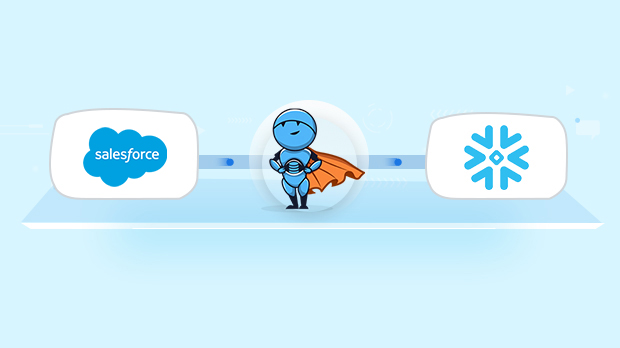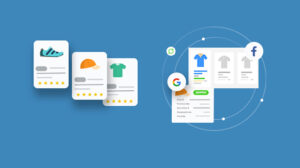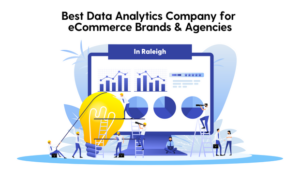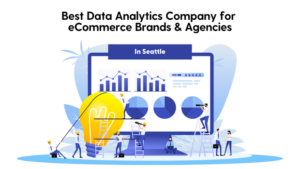If you’re reading this, you are probably looking for a way to transfer data from Salesforce to Snowflake quickly & efficiently. In this article, we will talk about why using Salesforce is essential and how you can get data from it and all your apps and tools together in one place without having to write any code.
Marketing Platforms, High Volume of Data & Business Intelligence Issues
The typical buying journey of a customer is no longer linear. They will switch between websites, compare similar products, search Google for promo codes, drift to trusted online sources for reviews, before returning to your website and finally making a purchase; perhaps using a completely different device. Thus, eCommerce vendors have to decide on what channels they want to sell and how much to spend. Understand customer demand and problems play a critical role in the success of any business.
The choice for eCommerce business when it comes to marketing and selling their merchandise is growing every day. eCommerce vendors have to decide on what channels they want to sell on, which channels they want to spend their advertising dollars. Complexity increases with the addition of every sales channel. For instance, if we consider marketing & lead nurturing channels available to support online business, you will find a choice of:
- Social Media Ads – Some platforms include Facebook Ads, Instagram, LinkedIn, Twitter, and others
- Digital ads and remarketing – Criteo, Taboola, Outbrain, and others
- PPC – Google ads, Bing ads, and others
- Email – Mailchimp, Klaviyo, Hubspot, and others
- Podcasts
- Affiliate – Refersion, CJ Affiliates
- Influencer marketing
- Offline marketing and more
In a competitive digital landscape that we live in, it has become imperative that eCommerce businesses of all sizes that aspire to grow and stay profitable have to look into their data deeply and leverage this for growth.
With the increase in competition, eCommerce Companies should strive to be more data-driven for various reasons. Some of these reasons include.
- Understanding the balance between demand and supply
- Understanding customer lifetime value (LTV)
- Following user journey through the conversion funnel
- Segmenting customer base for effective marketing
- Finding opportunities to reduce wasteful spend
- Optimizing digital assets to maximize revenue for the same marketing spend
- Improving ROIs on Ad campaigns and
- Offering an engaging and seamless experience for customers in every channel that the customer engages with the brand.
Businesses these days need to be efficient in terms of their data analysis. They are struggling to make sense of the data generated from various applications and tools used to manage different processes efficiently.
Due to the reasons highlighted above, any eCommerce business typically operates at least 10-15 different software/platforms to deliver on their customer expectations. As a result, data silos are created, which makes it more difficult to consolidate data and use the data for reporting, operations, analysis, and taking informed forward-looking decisions.
CRM platforms like Salesforce helps companies to:
- Manage their leads, accounts, and deals and share the data securely.
- Trigger instant actions, stay on top of activities and follow up better with workflows
- Streamline lead nurturing processes and make the most of every incoming lead
- Automate every aspect of your business and plan for time-intensive, repetitive tasks
- Give accurate lead attribution to marketing channels.
Top companies usually collect data from marketing campaigns, CRMs, e-commerce platforms, email marketing tools, social media marketing platforms, cloud telephony services. Behavioural patterns of users on like wishlists, search history, cart addition, cart abandonment data also provide powerful insights on product demand trends. They can use this huge volume of data to project sales trends and allocate marketing and other budgets accordingly to optimize profits. This data is continuously mined and analyzed and helps gain business intelligence, thereby minimizing loss and maximizing revenue.
Data Savvy eCommerce businesses try to reduce the effort of reporting and analysis by integrating data from all these channels into a cloud data warehouse like Oracle Autonomous. By taking this step, the process of reporting and analysis becomes easy, inexpensive, and consequently done more frequently.
Here, we will be looking at methods to connect data from Salesforce to Snowflake data warehouse.
Connecting Salesforce to Snowflake
- Salesforce Overview
- Snowflake Data Warehouse Overview
- Why Do Businesses Need to Integrate Salesforce to Snowflake?
- Replicate data from Salesforce to Snowflake
- Use a cloud data pipeline
- Daton – The Data Replication Superhero
Before we start explaining the process involved in data transfer, let us know more about the individual platforms separately.
Salesforce Overview
Salesforce is a web-based CRM software that allows its users to determine revenues and monitor leads. It is a leading sales, service, and marketing app. Salesforce CRM, Service, Platform and Marketing applications are designed for businesses to engage customers, partners, and employees in new ways. It has a mobile app for iOS and Android devices powered by real-time data from dashboards and custom reports. You can create complex reports, sales insights, and territory models with ease in the platform.
Additionally, it has a ‘Feed First’ feature that helps to view the essential information based on your settings at a glance. You can add more features and tools from a long list of apps in the AppExchange. Salesforce Sales Cloud allows you to get insights from varied, real-time customer data. The Lead Management, Sales Data, Marketing Automation, and Partner Management apps enable companies to create a systematic pipeline from lead to conversion. Salesforce is popular amongst users because:
- ease of conversion from a lead to an account.
- Ease of management and keeping track of deadlines and due dates.
- Ease of integration with other software.
- Ease of analytics.
- Ability to create and manage macros.
- “Bulk” updates of contacts.
- Ease of scrutinizing commercials with customers.
- Better report management assists in streamlining the trading process with suppliers.
Snowflake Data Warehouse Overview
Snowflake is a cloud-based data warehouse created by three data warehousing experts at Oracle Corporation in 2012. Snowflake Computing, the vendor behind the Snowflake Cloud Data Platform product, raised over $400 million over the past eight years and acquired thousands of customers. One might wonder if another data warehouse vendor is needed in an already crowded field of traditional data warehousing technologies like Oracle, Teradata, SQL Server, and cloud data warehouses like Amazon Redshift and Google BigQuery. Well, the answer is the disruption caused by cloud technologies and cloud opportunities for new technology companies. Public clouds enabled startups to shed past baggage, learn from the past, challenge the status quo, and take a fresh look at cloud opportunities to create a new data warehouse product. You can read this article to understand the core technology components that make up this modern, cloud-built data warehouse for consumers of cloud technologies.
You can register for a $400 free trial of Snowflake within minutes. This credit is sufficient to store a terabyte of data and run a small data warehouse environment for a few days.
For more information, visit Salesforce Connector.
Why Do Businesses Need to Integrate Salesforce to Snowflake?
Let’s take a simple example to illustrate why data consolidation from Salesforce to Snowflake can be helpful for an eCommerce business.
An eCommerce company selling in multiple countries is using Salesforce to manage and nurture their leads to optimize their conversions. They run ad campaigns on various channels like Google, Facebook, Email. They have sold on platforms like Shopify, Amazon, eBay. They use separate apps to manage and optimize multiple verticals like payment gateways, inventories, logistic channels and target audience in each country. Decision-makers want to have an understanding of the areas of improvement and then take steps to optimize processes further.
Businesses come across the following challenges for connecting Salesforce to Snowflake:
- Get a complete picture of the business by analyzing all the data from the various apps and tools that they use. So all of the inventory data, customer feedback, customer behaviour data, payment gateway data need to be appropriately analyzed to develop a consolidated picture of the entire business.
- Separate data silos mean downloading different sheets from all these multiple sources from which detailed reports are created. To make matters worse, most of the sources have separate data silos for each country. The compilation and processing of data from multiple sources for thorough research is a considerable challenge if carried out manually, and the analysis is not very accurate.
- While calculating profits/losses of the overall business, it becomes a nearly impossible task to pull all of these data from multiple platforms for each country separately, and then analyze all of this data together with the expense data and calculate profits. It involves a lot of working hours which drains money. The time lag involved reduces the accuracy of the analysis and its effectiveness as the data is not analyzed in real-time.
- Salesforce contains data of leads, which need nurturing to get conversions. The lead nurturing is being done through email and remarketing or over the telephone. The CRM is not natively compatible with all apps and tools, so it is not possible to automate these processes based on the lead stage, leading to low conversion rates.
- Again since the users are responding to different ad campaigns on various channels that are not compatible with the CRM. That data is not being reflected in the CRM to accurately allocate lead scores to the leads so that you can set priorities when it comes to lead engagement.
- Since businesses use separate platforms & tools for selling, payments, logistics, it becomes impossible to track the user’s path through the conversion funnel. As a result, essential insights can help determine when and where the user is bouncing off.
For these reasons, top companies consolidate all of their data from Salesforce and other apps and tools into a data warehouse like Snowflake to analyze the data and to generate and automate reports at a rapid pace.
Replicate data from Salesforce to Snowflake
There are two board ways to pull data from any source to any destination. The decision is always a build vs buy decision. Let us look at both these options to see which option provides the business with a scalable, reliable, and cost-effective solution for reporting and analysis of Salesforce data. You can also retrieve the data from Snowflake any time you want. To know more, click here.
Use a cloud data pipeline
Building support for APIs is not only tedious but it is also extremely time-consuming, difficult, and expensive. Engaging analysts or developers in writing support for these APIs takes away their time from more revenue-generating endeavors. Leveraging an eCommerce data pipeline like Daton significantly simplifies and accelerates the time it takes to build automated reporting. Daton supports automated extraction and loading of Salesforce data into cloud data warehouses like Google BigQuery, Snowflake, Amazon Redshift, and Oracle Autonomous DB.
Configuring data replication on Daton on only takes a minute and a few clicks. Analysts do not have to write any code or manage any infrastructure but yet can still get access to their Salesforce data in a few hours. Any new data is generated is automatically replicated to the data warehouse without any manual intervention.
Daton supports replication from Salesforce to a cloud data warehouse of your choice, including Snowflake. Daton’s simple and easy to use interface allows analysts and developers to use UI elements to configure data replication from Salesforce data into Snowflake. Daton takes care of
- authentication
- rate limits,
- Sampling,
- historical data load,
- incremental data load,
- table creation,
- table deletion,
- table reloads,
- refreshing access tokens,
- Notifications
and many more important functions that are required to enable analysts to focus on analysis rather than worry about the data that is delivered for analysis.
Daton – The Data Replication Superhero
Daton is a fully-managed, cloud data pipeline that seamlessly extracts relevant data from many data sources for consolidation into a data warehouse of your choice for more effective analysis. The best part analysts and developers can put Daton into action without the need to write any code.
Here are more reasons to explore Daton for Salesforce to Snowflake Integration:
- Support for 100+ data sources – In addition to Salesforce, Daton can extract data from a varied range of sources such as Sales and Marketing cloud applications, Databases, Analytics platforms, Payment platforms, and much more. Daton will ensure that you have a way to bring any data to Snowflake and generate critical insights.
- Robust scheduling options allow users to schedule jobs based on their requirements using simple configuration steps.
- Support for all major cloud data warehouses including Google BigQuery, Snowflake, Amazon Redshift, Oracle Autonomous Data Warehouse, PostgreSQL, and more.
- Low Effort & Zero Maintenance – Daton automatically takes care of all the data replication processes and infrastructure once you sign up for a Daton account and configure the data sources. There is no infrastructure to manage or no code to write.
- Flexible loading options allows to you optimize data loading behavior to maximize storage utilization and also easy querying.
- Enterprise-grade encryption gives your peace of mind
- Data consistency guarantee and an incredibly friendly customer support team ensure you can leave the data engineering to Daton and focus instead of analysis and insights!
- Enterprise-grade data pipeline at an unbeatable price to help every business become data-driven. Get started with a single integration today for just $10 and scale up as your demands increase.
For all sources, check our data connectors page.
We Saras can help with our eCommerce-focused Data pipeline (Daton) and custom ML and AI solutions to ensure you always have the correct data at the right time. Request a demo and envision how reporting is supercharged with a 360° view.
Other Articles by Saras Analytics,













